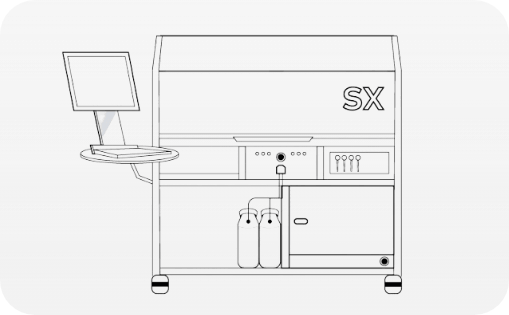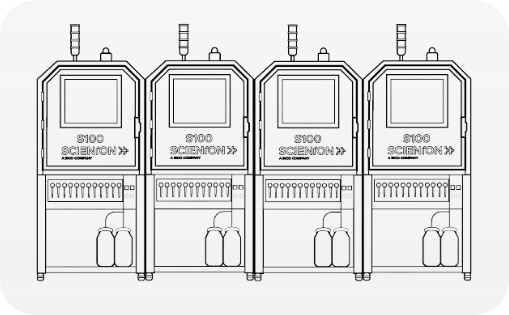Microneedle Drug Delivery
Precision Dispensing for Transdermal Therapeutics
The stratum corneum, just 20 µm thick, represents one of medicine’s most formidable barriers. Microneedles solve this challenge, creating painless pathways through the skin’s outer layer to deliver vaccines, biologics, and small molecules directly into the vascularized dermis and epidermis. With 60-95% pain reduction compared to hypodermic injections and the convenience of self-administration, microneedle patches are transforming drug delivery for everything from insulin and immunotherapy to cosmetic applications.
But here’s the catch: inconsistent drug loading can undermine everything. Whether you’re coating solid microneedles, formulating dissolving polymer tips, or filling hollow arrays, reproducible dose control at the picoliter scale is non-negotiable for safety, efficacy, and regulatory approval.
That’s where SCIENION’s sciFLEXARRAYER platform makes the difference. Our non-contact piezo dispensing technology deposits drug formulations from 10 pL to 100 µL with unmatched precision, onto even the most delicate substrates. From R&D prototyping to GMP-compliant manufacturing, sciFLEXARRAYER systems deliver the accuracy, traceability, and throughput required to move microneedle technologies from bench to bedside.
Trusted by






MICRONEEDLE APPLICATIONS

MICRONEEDLE DRUG COATING
Achieve uniform drug coating or polymer encapsulation for vaccines, biologics or controlled-release therapeutics.

Hollow Microneedle Reservoirs
Enable sterile, contamination-free filling of hollow microneedle reservoirs for biologics and high-value formulations.

Biosensing & Theranostic Platforms
Deposit biosensing reagents with precision onto microneedle-integrated diagnostic and theranostic platforms.
Precision Drug Delivery, and Beyond.
The sciFLEXARRAYER platform delivers picoliter-to-microliter dispensing precision for microneedle manufacturing and beyond. Non-contact piezo technology ensures contamination-free, reproducible dosing from single-array prototyping to high-volume production lines. With fiducial-based vision alignment, full traceability, and GMP-ready workflows, sciFLEXARRAYER adapts to every stage of development, from discovery to regulated microneedle manufacturing.
Featured Resources

VIDEO
Watch microneedle coating by sciFLEXARRAYER
Watch sciFLEXARRAYER technology deposit reproducible picoliter volumes onto individual microneedles with precision and control. This demonstration highlights the sciDROP PICO dispenser’s fiducial-guided positioning and contamination-free operation on complex, three-dimensional microneedle arrays. Unlike traditional dip-coating methods, SCIENION’s non-contact dispensing minimizes sample waste, ensures full volume control, and scales seamlessly from R&D prototypes to manufacturing workflows.

Publication
Microdispensing for Microneedle Patch Development
The Tyndall National Institute, a world leader in microneedle technology, uses SCIENION dispensing systems to deposit 400 pL drug droplets onto individual microneedles with unmatched precision. This case demonstrates how automated, non-contact dispensing ensures uniform dose distribution across entire arrays, critical for reproducibility in both R&D and manufacturing.

VIDEO
Prof. Cass talks about his research and how they use SCIENION technology to develop microneedle biosensors
Professor Tony Cass is Professor of Chemical Biology in the Department of Chemistry and Institute of Biomedical Engineering at Imperial College London, and a Fellow of the Royal Society of Chemistry and Society of Biology. With degrees from the Universities of York and Oxford, his research focuses on analytical biotechnology, biosensor development, and microfabricated diagnostic devices. Prof. Cass pioneered the use of synthetic electron transfer mediators in enzyme biosensors, work that led directly to the development of the first electronic blood glucose monitoring system.





